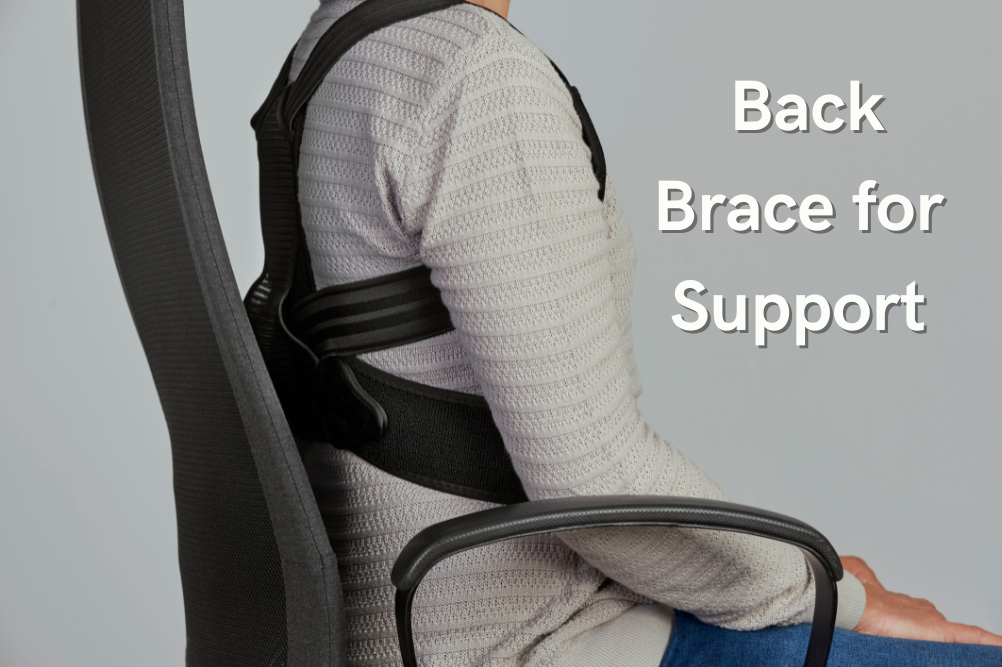Taking care of your back is essential for maintaining a healthy and pain-free life. Back injuries and chronic pain can significantly impact your daily activities and overall well-being. Fortunately, there are several proactive steps you can take to prevent back injuries and keep your spine strong and resilient. In this article, we will explore some of the top tips for back care, backed by expert advice and research.
It’s been quoted that at least 4 million Australians, some 16% of the population, suffer from back problems, according to a study by the Australian Bureau of Statistics. In reality, this figure is likely even higher due to so many unrecorded back complaints, as well as people who occasionally suffer from back pain. Back issues are also said to be the second leading cause of disease burden in the country. With the problem being so widespread among males and females and people of all ages, what are some things you can do to prevent back injury and back pain?
Why is back care important?
Proper back care is crucial because your back supports your entire body and plays a vital role in your mobility and overall functionality. Neglecting back care can lead to various problems, including muscle strains, herniated discs, poor posture, and chronic pain. By prioritizing back care, you can reduce the risk of injuries and enjoy a better quality of life.
How can I improve my posture?
Maintaining good posture is essential for a healthy back. Start by being mindful of your posture throughout the day, whether you are sitting, standing, or walking. Ensure that your back is straight, your shoulders are relaxed, and your head is aligned with your spine. Additionally, using ergonomic furniture and taking frequent breaks to stretch can also help improve your posture.
Wear a Back Brace for Support
If your back is currently giving you problems or you simply want to protect your back while you’re at work or doing some other physical activity, it can be a wise idea to wear a back brace or back support. Braces and supports keep the spine in place, force you to maintain a straight back and also offer protection and support for the muscles of the lower back.
Chronic back pain sufferers will likely get a lot of value and relief out of a back support or back brace, along with a much-needed boost in confidence while wearing it.
What are some exercises to strengthen the back?
Regular exercise is a key component of back care. Strengthening the muscles that support your spine can provide stability and prevent injuries. Some beneficial exercises include:
Core exercises: Planks, bridges, and abdominal exercises can help strengthen the core muscles, which play a significant role in supporting the back.
Back extensions: Exercises like supermans and bird dogs can target the muscles in your lower back, improving their strength and flexibility.
Yoga and Pilates: These practices focus on strengthening the core, improving flexibility, and enhancing overall body alignment.
For people suffering from a bad back, it’s also commonly suggested to engage in regular yoga exercises. Not only does yoga relieve stress, stretch those muscles and make you more flexible, but it will also help to strengthen those back muscles and your core.
How can I prevent back injuries while lifting heavy objects?
One of the most common causes of back injuries is lifting things incorrectly. Rather than bending over to heft a heavy object, which places tremendous strain on the lower back, the spine and the sciatic nerve, instead, you should squat down, keep your back straight, grasp the object and use the power of your legs to do the heavy lifting. To protect your back while lifting, follow these guidelines:
- Bend at your knees, not your waist.
- Keep the object close to your body.
- Use your leg muscles to lift, not your back.
- Avoid twisting your body while lifting.
- If the object is too heavy, ask for assistance.
People who regularly suffer from things like a slip or herniated disc can aggravate the problem even when lifting relatively light objects in the wrong manner. If you can, avoid heavy lifting altogether if you are prone to back injuries.
Are there any specific tips for back care at work?
Many people spend long hours sitting at a desk, which can lead to back problems. Here are some tips to protect your back while working:
- Use an ergonomic chair and adjust it to support your lower back.
- Position your computer screen at eye level to avoid straining your neck and upper back.
- Take regular breaks to stand up, stretch, and walk around.
- Incorporate back-friendly exercises into your routine, such as stretching or strengthening exercises.

How can I prevent back pain during physical activities?
Engaging in physical activities is excellent for your overall health, but it’s important to protect your back during exercise. Follow these tips to prevent back pain:
- Warm up properly before any physical activity.
- Use proper form and technique when exercising.
- Listen to your body and stop if you experience pain.
- Incorporate exercises that specifically target the back and core muscles.
- Gradually increase the intensity and duration of your workouts.
Can maintaining a healthy weight help prevent back problems?
Excess weight can put additional strain on your back, leading to pain and discomfort. Maintaining a healthy weight can help alleviate the pressure on your spine and reduce the risk of back problems. Adopting a balanced diet and engaging in regular exercise can contribute to weight management and improve your overall back health.
Losing Weight Can Help
While not everyone’s back problems can be attributed to weight gain, it is in some cases. If you are carrying around a bit of extra weight, trimming off and getting down to your ideal weight will help to take some strain and stress off your lower back. Losing weight will also benefit every other part of your body, as well as being healthier overall.
Even if you’re not yet suffering from any form of back pain, being overweight can eventually lead to either mild or chronic back issues.
Back care is crucial for preventing injuries and maintaining a pain-free back. By practising good posture, engaging in regular exercise, and taking preventive measures in daily activities.
As you can see, there are numerous things you can do to protect your back, prevent injury to the back and to relieve or prevent back pain. Avoiding back problems altogether is ideal but if you are already a back pain sufferer, practice everything mentioned in this article on a regular basis for pain relief and better back health.
Sources:
https://www.aihw.gov.au/getmedia/0d9f8959-2a1c-4c99-8c7e-0c8a878f4d6c/Back%20problems.pdf.aspx?inline=true#:~:text=About%204.0%20million%20Australians%20(16%25%20of%20the%20total%20population),age%2024%20(Figure%201).
https://health.gov/myhealthfinder/topics/everyday-healthy-living/safety/prevent-back-pain#panel-1
https://www.medicalnewstoday.com/articles/323204#bridges











